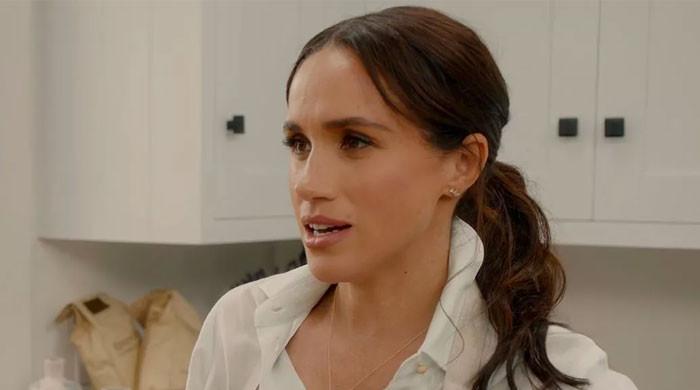Subscribe to our newsletter Privacy Policy Success! Your account was created and you’re signed in. Please visit My Account to verify and manage your account. An account was already registered with this email.
Please check your inbox for an authentication link. We rely on readers like you to fund our journalism. If you value our coverage and want to support more of it, please join us as a member .

In François Pain’s 1985 film, “La Vague de Cristal” (The Crystal Wave), a group prepares for the arrival of the titular occurrence — a conceivably apocalyptic event that prompts one man to remark that they “need shields and armor.” Instead, the video detours — and cuts to an art class. The film’s existentialist premise offers, at least briefly, one form of salvation: creative production.
The video, attributed to Pain, was actually the product of the artist’s film workshop at La Borde, an experimental psychiatric hospital in France where he worked as a psychiatrist from 1965 to 1972. At JOAN, Pain’s newest exhibition of avant-garde video works, Psychiatry is what psychiatrists do , offers a window into one radical approach to mental healthcare — and the ways it can shape an art practice. La Borde, along with another clinic called Saint-Alban, were the first hospitals to utilize Institutional Psychotherapy, or IP: a treatment plan derived from Lacanian and Marxist schools of thought that argued for the deconstruction of oppressive hierarchies in psychiatric care.
Pain’s films, composed from footage shot during his time at the clinics, illustrate the results of these efforts, rendering the worlds of Saint-Alban and La Borde nearly unrecognizable as mental institutions. It is often difficult to distinguish between patient and clinician: A small television with a wooden chair near the gallery’s entrance displays Le cahier vert (The Green Notebook, 1980), in which French theory juggernaut Félix Guattari — here a charmingly amateurish actor — searches for a lost notebook, mingling with several presumable hospital patients along the way. Likewise, in “The Crystal Wave,” doctors and psychiatric residents are rendered equal — even indistinguishable — both onscreen and in the film’s production, which was made as a collective effort.
Pain’s new art installation, “Institutional Psychotherapy as one of the fine arts...
” (2025), captures the communal goals of La Borde and Saint-Alban founders Jean Oury and François Tosquelles in a nine-channel, nearly 25-minute montage of previously disparate footage, most shot during Pain’s time at the clinics. In one poignant section, Oury describes the “double alienation” of many individuals prior to their arrival at the hospital, one that is both “psychotic ..
. the alienation of the mad” and “social.” In order to “cure the mad,” Oury implies, one must first “cure the hospital” of its socially alienating qualities.
Pain’s frenetic artwork, like La Borde and Saint-Alban, forces collectivity to form from scenes of disenfranchisement: Oury’s interview appears alongside black-and-white footage of soldiers carrying dead bodies, solitary figures navigating a crowded subway car, and police officers arresting a civilian. Projected next to each other in a nine-part grid, the video’s stream turns these isolated, often violent scenes into a unified experience. Get the latest art news, reviews and opinions from Hyperallergic.
Daily Weekly Opportunities In Pain’s experimental films, this innovative psychiatric mode becomes art, and vice versa. While some of these videos feel more didactic than invigorating, Pain’s artwork offers one jumping off point to imagining a more just world — either at the hospital or in the art gallery. François Pain: Psychiatry is what Psychiatrists do continues at Joan (Bendix Building, 1206 Maple Avenue # 715, Los Angeles, California) through April 26.
The exhibition was curated by Perwana Nazif . We hope you enjoyed this article! Before you keep reading, please consider supporting Hyperallergic ’s journalism during a time when independent, critical reporting is increasingly scarce. Unlike many in the art world, we are not beholden to large corporations or billionaires.
Our journalism is funded by readers like you , ensuring integrity and independence in our coverage. We strive to offer trustworthy perspectives on everything from art history to contemporary art. We spotlight artist-led social movements, uncover overlooked stories, and challenge established norms to make art more inclusive and accessible.
With your support, we can continue to provide global coverage without the elitism often found in art journalism. If you can, please join us as a member today . Millions rely on Hyperallergic for free, reliable information.
By becoming a member, you help keep our journalism free, independent, and accessible to all. Thank you for reading. Share Copied to clipboard Mail Bluesky.
Entertainment

François Pain’s Art as Salvation

The artist’s avant-garde video works draw from his time working at an experimental psychiatric hospital in the 1960s–70s.














